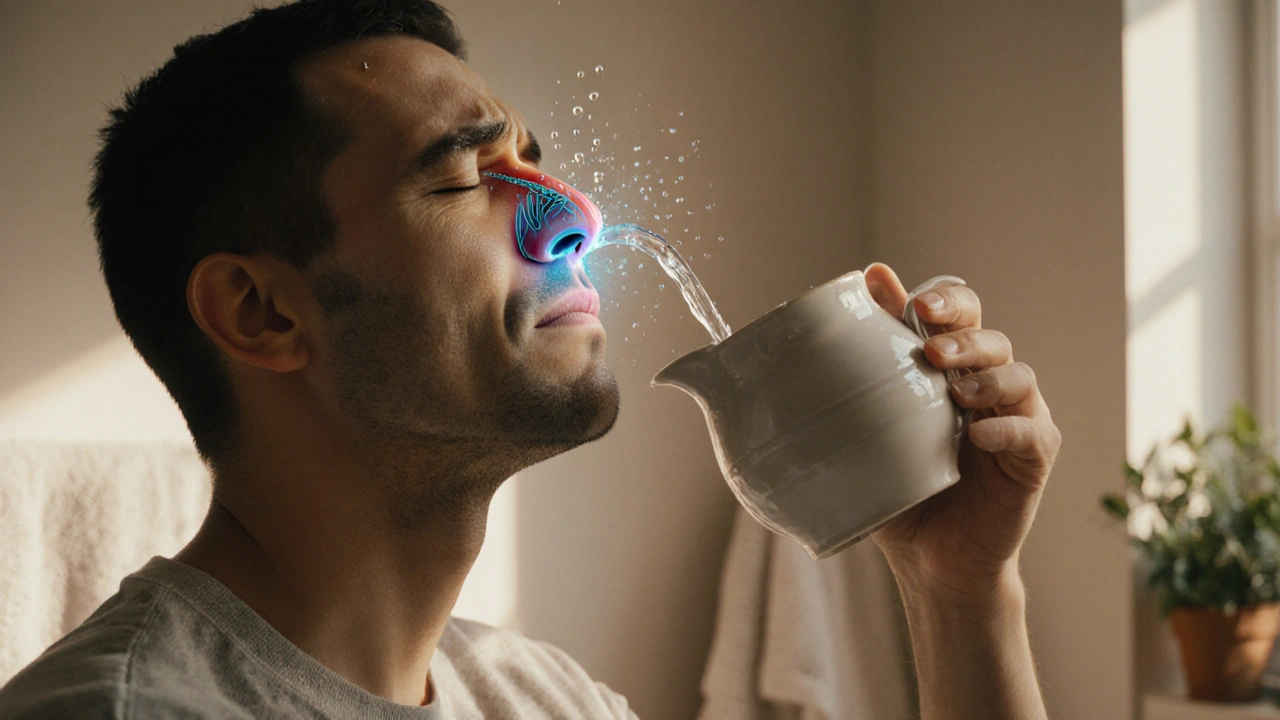Saline Nasal Irrigation: Simple Steps for Clearer Breathing
If you’re stuck with a stuffy nose, a salt water rinse can feel like a miracle. It’s cheap, easy, and works without drugs. In this guide we’ll walk through why the rinse helps, how to do it right, and what pitfalls to watch out for.
Why Use Saline Rinse?
Saline solution pulls out mucus, allergens, and pollutants that sit in the nasal passages. By flushing out that buildup you reduce swelling, improve airflow, and make it easier for the tiny hairs (cilia) to keep the sinuses clean. The trick is that the water is isotonic – it matches the body’s natural salt balance – so it won’t irritate the lining.
People with allergies, colds, or chronic sinus problems often notice relief after just one session. It also helps after a cold or flu when the sinuses are still congested but the infection is gone. The rinse is drug‑free, so there’s no risk of drowsiness or interactions with other meds.
How to Do a Safe Saline Irrigation
First, mix the solution. Use ¼ teaspoon of non‑iodized salt (and a pinch of baking soda if you like) in 8 oz of warm distilled or boiled‑then‑cooled water. Commercial pre‑made packets work too – just follow the label.
Next, pick a device. A squeeze bottle, neti pot, or powered nasal irrigator all do the job. Fill it, tilt your head over the sink at a 45‑degree angle, and gently pour the solution into the higher nostril. Let it flow out the lower side. Breathe through your mouth while the water runs.
Switch sides and repeat until the water runs clear. Most people need 120‑240 ml per side; you can adjust based on comfort. When you’re done, gently blow your nose to clear any leftover fluid.
Cleanliness is crucial. Rinse the device after every use with hot water and let it air‑dry. Replace the tip or spout regularly to avoid bacterial growth. Never reuse water that’s sat out for more than a few hours – microbes love stale water.
How often should you rinse? For acute congestion, once or twice a day is fine. If you have chronic sinus issues, a daily rinse can keep symptoms in check. Pay attention to how your nose feels; over‑irrigating can dry out the lining and cause mild irritation.
Some quick safety tips:
- Always use sterile or boiled water; tap water can contain harmful organisms.
- Don’t use too much salt – a solution that’s too salty can sting.
- Avoid vigorous force; a gentle flow is enough to clear mucus.
- If you experience persistent pain, bleeding, or fever, stop and see a healthcare professional.
That’s the whole process in a nutshell. With a little practice you’ll be able to breathe easier in minutes, without reaching for decongestant pills.
Ready to try it? Grab a neti pot or a saline squeeze bottle, mix your solution, and give your sinuses a fresh start. Your nose will thank you, and you’ll notice the difference right away.

Saline Nasal Irrigation: Fast Relief for Stuffy Nose & Watery Eyes
Discover how saline nasal irrigation eases congestion and red, watery eyes. Learn the science, best solutions, safe techniques, and practical tips for lasting comfort.